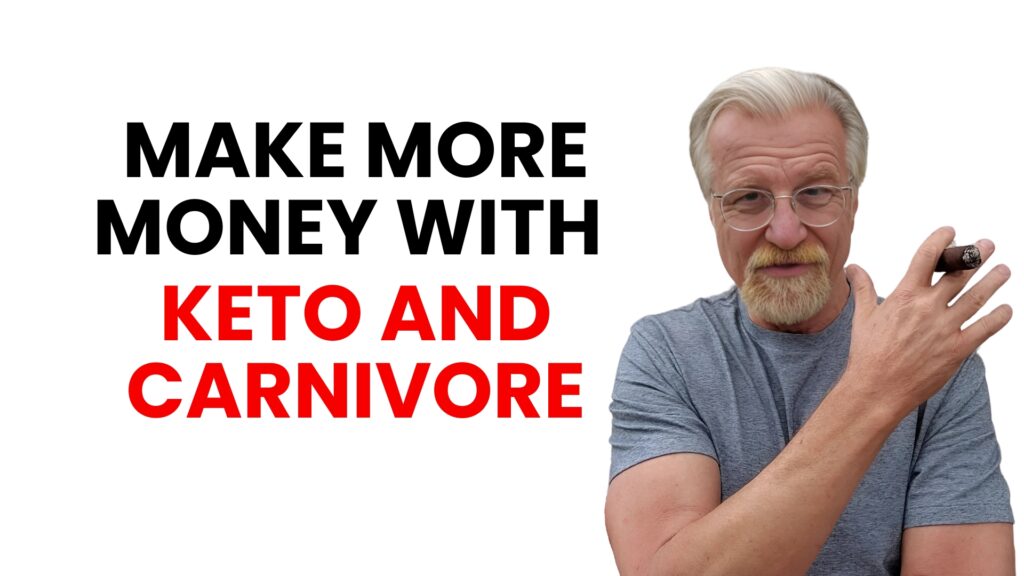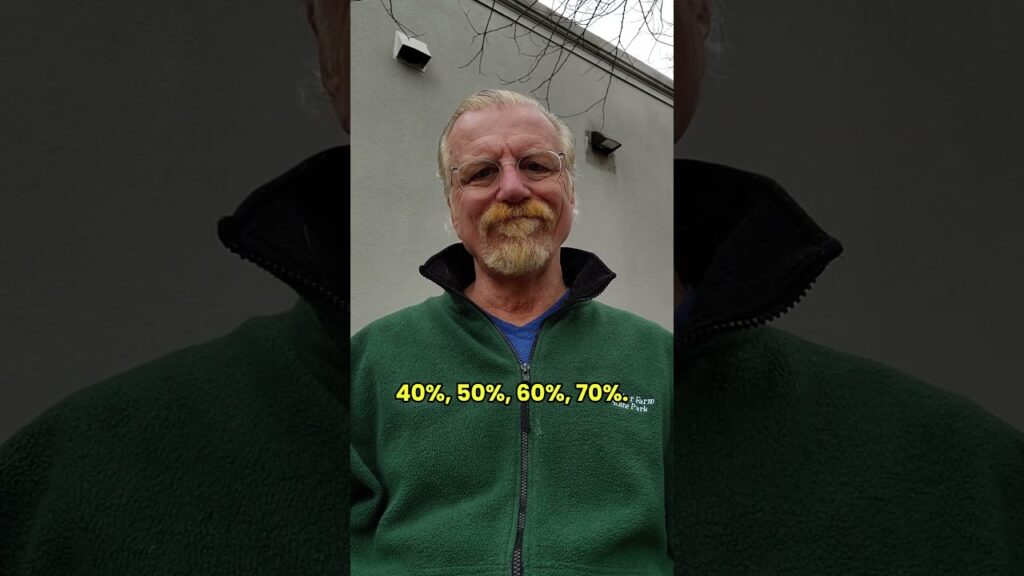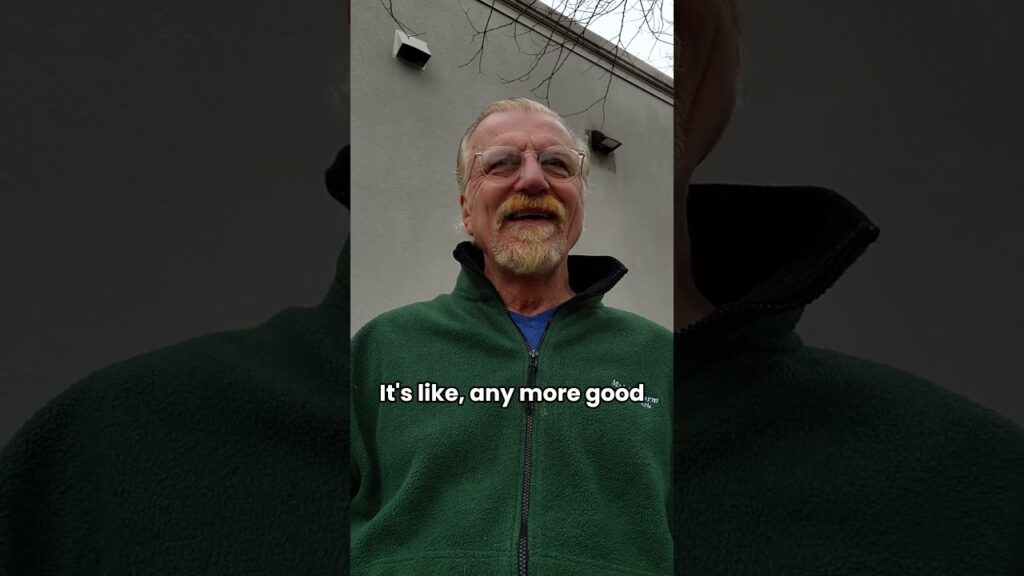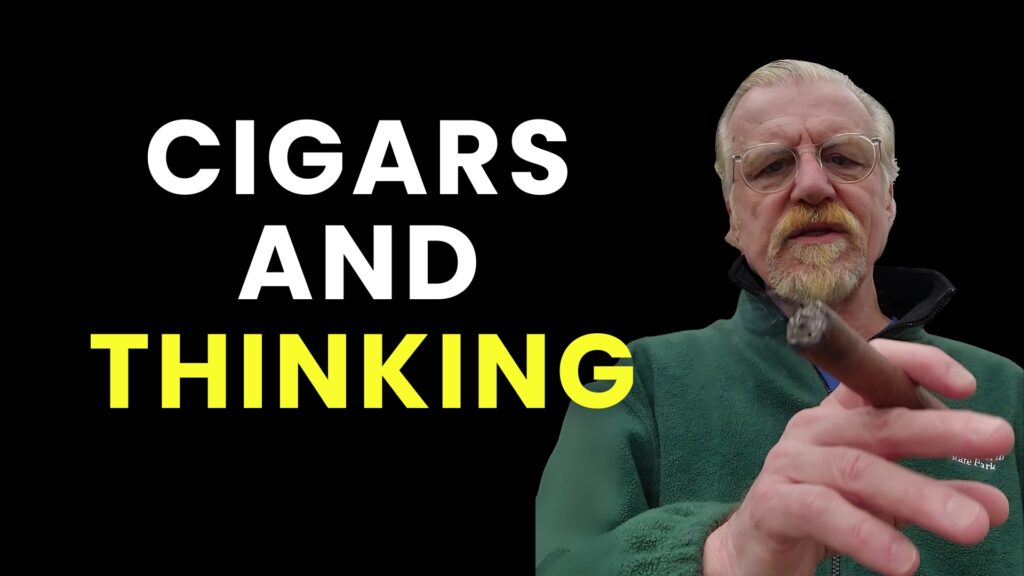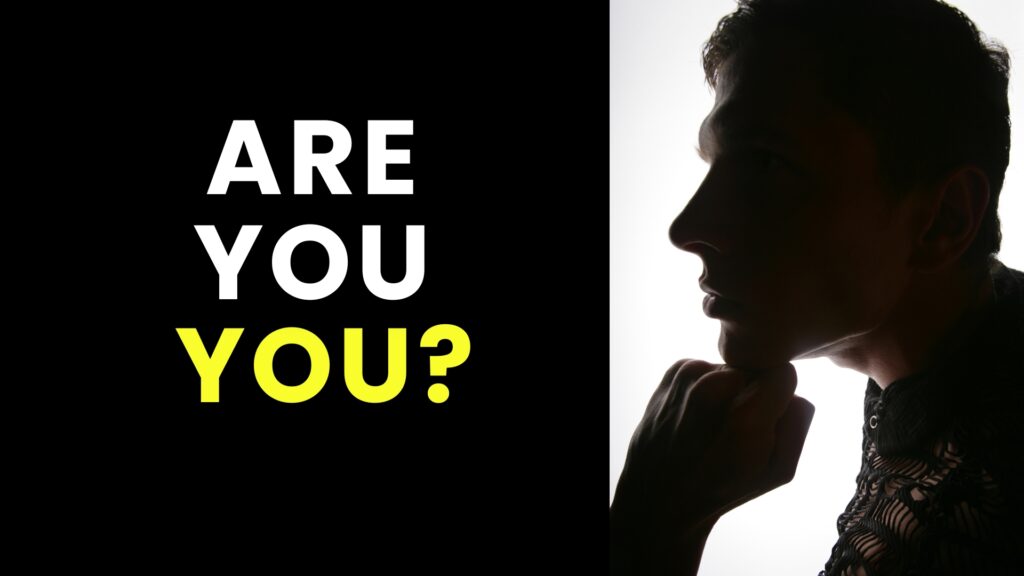Totality of Care Symposium: Interview with Dr. Avis DDS
Introduction to Dr. Victor Avis and Airway Disorders
Andrew Anderson: Hello there, Andrew Anderson, and I have Dr Victor Avis with us this morning. And, so most people are watching, doc, don’t have any idea who you are, what you do and rather than me going on a long blather about that, why don’t you tell us about yourself?
Victor Avis: Sure. My profession, I’m a general dentist in Staten Island, New York. I’m also the the father of three daughters, ages 27 to 31. And, somewhere is about, oh, I guess about six, oh, about eight years ago, I recognized in my oldest daughter that, things that were interfering with her life significantly: anxiety, fatigue, depression, just a digestive system that despite being a healthy vegan, never seemed to feel very good eating anything.
Understanding Airway Disorders: Symptoms and Impact
Victor Avis: I started to put pieces together because of my own education and I recognize that my goodness, the root cause of the problem could well be an airway disorder, which I know people have no idea what that means and I’ll explain it in a second. But that airway disorder…
Andrew Anderson: It’s just the ability to breathe, correct?
Victor Avis: The ability to breathe, but it’s different from asthma, could be also cause a difficulty to breathe. So airway disorders, as I’m talking about it, the upper airway from the nose to the voice box. And anything that causes a constriction or restriction to the flow of air, which makes you necessarily, not that you can’t breathe, but without you realizing it, you have to create more effort to pull the breath in because you’re sucking the air through a smaller tube, so to speak. And that gets amplified very often at nighttime because at nighttime we’re sleeping on our back or a side.
So there’s a postural change as well as the fact that our conscious mechanisms to breathe are altered during deeper stages of sleep. And so this breathing disorder during the day can be amplified at night such that all of a sudden you’re not getting the restful, reparative sleep that every cell and organ of your body needs to be optimal. And so that’s what an airway disorder is.
The Misdiagnosis of ADHD and the Importance of Sleep Studies
Andrew Anderson: Okay, maybe we should start off with this, but what’s… if they have an airway disorder or breathing disorder, what are the symptoms? What can be the- the thing that struck me was learning disorders, ADHD, and quite a few others, especially in children. Can you give us… just hit us up with that.
Victor Avis: Yeah, I think first, perspective wise, I’d like to use a metaphor, such that, “everybody who smokes does not get lung cancer.” Why is that? Because different people have different resiliencies. And so it is with airway disorders. So it can manifest or show itself as different signs and symptoms.
So there could be 10 children that all have airway disorders. And let’s think of children that are age two and three, and some have a history of colic and never getting sleep as a baby and being really difficult children. And others will look like, angelic children that slept beautifully from the time they were born, and yet they both could have constricted airways and yet they’re showing up differently.
So it’s very important to look at all the signs and symptoms, but some of the most common ones with children, young infants can be colic, difficulty breastfeeding, ear infections, throat infections, many courses of amoxil or antibiotics as a child. And then as you move up to early childhood, behavior issues, focus challenges, ADD or ADHD like symptoms or diagnosed ADD or ADHD. And then as we move a little farther up the chronologic timeline, you can then develop signs and symptoms of anxiety, depression, continued social problems or behavioral problems. manifesting in adulthood as high blood pressure, cardiovascular disease, diabetes, and then later on as dementia.
So it’s a continuum and ultimately it’s going to catch up to people. Some people it affects, like with my daughter Sydney, early on in her life and it showed up as terrific fatigue and tiredness. Others, it may not show up until all of a sudden they have high blood pressure.
And they said, “Oh yeah, I snore,” and that could be a sign. So by the way, snoring is not normal. Snoring has been made to be a laughable or funny event through media. But snoring is an indicator of a clear airway disorder, as is mouth breathing. So people that are breathing through their mouth, rather than through their nose have an airway disorder.
Andrew Anderson: Yeah. I grew up in the Midwest. And if you called someone a mouth breather, it always meant that they were diminished in some way. They weren’t real snappy. And that could actually have some basis in fact, because they weren’t getting enough oxygen so it slowed down their ability to think.
Victor Avis: Yes. It’s kind of like those old wives tales or things that our mother or grandmother knew were rooted in significant reality and yes. So mouth breathing was associated with being not smart, being a “dolt,” a D O L T. And indeed, there’s basis in fact, because when you don’t get enough oxygen night after night, it’s going to affect your full cognitive ability.
Andrew Anderson: The purpose of your organization is, one, to awareness is one of the things, and then two, to let people know that there are solutions for it. And going back, because I think that I had never heard of this before, until six months ago and then even then I didn’t dig into it. But what surprised me was when I saw your story with your daughter that I know so many people that have children that have those same symptoms, and instead of putting them on drugs because of X, Y, or Z, that they really need to examine this first.
And I don’t know what statistics you have, but what portion of, do you think, that the children out there now have an airway disorder that may cause them these other symptoms that are out there? If you can give me an estimate.
Victor Avis: I will tell you that I don’t believe that we fully have our arms and minds wrapped around the numbers, but I can tell you the ones that are published and that come from, good sources: the head of medical school, Marshall University and the coauthor of the definitive book on pediatric sleep disorders. He believes that 80% of children with airway disorders and sleep disorders are undiagnosed and that 40% of children that are on drugs for ADHD. So things like Ritalin and Vyvanse. They’re amphetamines. Those drugs should not be on those drugs at all. It’s a misdiagnosis. I’m going to say it again. 40% of the kids that are on drugs for ADHD should not be on those drugs at all in Dr Gozal’s opinion and of the other 60% they probably should be on a much lower dose if they would at least get a sleep study and be evaluated for an airway disorder.
That’s in the childhood population, it’s pretty darn significant. And know that amphetamines are drugs that cause a higher risk for drug abuse later in life. So they’re not drugs without significant danger to them.
Andrew Anderson: This has been going on for a while and without even getting controversial, you just take logic. That’s why the drug problems have been getting worse and they can’t keep pointing fingers at us because the kids are getting drugged up on early.
Victor Avis: I want to just say one thing. It’s not that those drugs aren’t ever needed. That’s not what I’m saying. I’m saying that if your child, a study of one, that’s as a parent, that’s who you care about, has behavioral and learning issues, do a sleep study because that could be the problem or part of the problem and it could either avert the use of medication or lower the dosage. And so we should at least diagnose before we treat. It’s a tenant of medicine and dentistry. Diagnose before we treat. And I think when it comes to airway disorders, far too often, this is forgotten.
Andrew Anderson: Gotcha.
The Role of Insurance and Accessibility of Sleep Studies
Andrew Anderson: And then, so the sleep studies, the ones that I’ve heard about, they’ve got ones, they’ve got them for children now. You’re not talking about going into overnight somewhere else and putting them up, you’re talking about keeping it at home and then putting a ring on them, as I understand it. What are we looking at cost wise to do a study for that?
Victor Avis: Yes, so I think, first of all, that more often than not, if people have medical insurance, it’s very easy to get it covered completely by medical insurance. I haven’t had a patient that I’ve referred for a sleep study based upon, a host of symptoms. So for a child, it could be, “Hey, I get frequent sore throats or I get ear-aches or I have trouble learning in school.” We should do a sleep study. It’s going to be covered.
If you went out of pocket, there are companies now doing it for $99 a month, where you could get a ring sent to you, do two weeks of sleep study. They have multiple nights. And then have a sleep physician interpret the results. It’s very accessible, much more so than five years ago.
Andrew Anderson: Yeah, that’s great.
Upcoming Symposium on Totality of Care: A Multidisciplinary Approach
Andrew Anderson: And then you’re gonna be speaking about this at, the get-together for Totality of Care in Knoxville coming up in May. Could you give us a synopsis of what you’re going to talk about and why doctors and dentists and healthcare professionals should come listen to you or jump online? We do have virtual tickets, too.
Victor Avis: I think the profession, more and more professions of dentistry, medicine, speech and language, pathology, dental hygiene, are recognizing more- but remember still it’s a small percentage of the population- how insidious problematic airway disorders are. Meaning the effect on overall health and well-being.
The real breakdown that I see is in diagnosis and treatment amongst these professionals, because getting a sleep study has become much easier, as we just mentioned. But then interpreting the results and leading the child or the adult to a successful outcome, there is such a disconnect or such an opportunity to do much better.
What I’m going to speak about is what we know about diagnosis and treatment. So for instance, Andrew, you could have a constriction in your nose, at the back of the roof of your mouth called the soft palate, the tongue base or your epiglottis. If at nighttime, your tongue is falling back and blocking your airway, a CPAP machine, which blows air through your nose or through your nose and mouth to blow open the airway, is usually not going to be effective because the tongue muscle is too strong. If the constriction is your soft palate, it can be very effective. Believe it or not, at this point in time, nobody’s, hardly ever is that differential made.
So it’s more okay, your sleep study showed you have some sort of a disorder. We’re going to try CPAP and people very often fail. And are they failing because it’s the wrong mask? It’s the wrong pressure setting or because it’s the wrong treatment, because they have a tongue base collapse? And so that is an example of what’s going on in the space of diagnosis and treatment, is that we’re very incomplete from the time of a doctor’s diagnosis to applying the correct treatment. And most people aren’t even given the options for all the potential treatments there are. And very often it’s a combination of treatments. So maybe Andrew, in your case, we’d have to fix your nose plus use a CPAP machine. Or maybe, as in my daughter’s case, the only solution was upper and lower jaw surgery.
We know better, but the general population of physicians and dentists and SLPs and dental hygienists and DOs do not know this. They only know if they learned anything about it, they only know their silo.
Andrew Anderson: And that was for most people, 10, 20 years ago.
The Importance of Education and Collaboration in Healthcare
Andrew Anderson: And so this is now. LMU, which is Lincoln Memorial University is now starting to put this or help put this in the curriculum so the newest dentists and doctors are trained on this and hygienists and everything else. Is that what is happening now? And then it’s going to take a while, 10 or 15 years to get out in the general population?
Victor Avis: Yes, Andrew. LMU stepping up and hosting this symposium is a huge event because we need universities to embrace the importance of airway disorders in medical and dental education. Number one, tomorrow’s doctors are ready to serve this epidemic of health issues in our population. But number two, it gives a level of importance and credibility to how big this issue is. And we hope that LMU becomes the leader and others follow because it’s good medicine, it’s good dentistry, and it’s good business, quite honestly, because so many people need this care and it can help avert cardiovascular disease, heart attack, stroke, which are still the number one and three killers in America. We need this in the universities.
Andrew Anderson: I totally agree with you. And one of the things too. I’m glad that you brought this up because everybody’s talking about the expensive health care and whatnot. But from what I’ve seen, because I’m coming from a marketing background, the dentists and the doctors that adopt this, they have healthier patients and they have healthier practices because they can diagnose the issue quickly and immediately and take care of the problems and that helps their practice because they come back to them. They don’t have to get- they don’t have to get the run around. And so the better the diagnostics, and this is me talking, not a medical professional, and the healthier the patients, the more the doctor’s gonna make. And the insurance companies will save it long term. So it’s an oxymoron, or is it?
Victor Avis: Yeah, I think it is to some degree to lay people like yourself. It’s so obvious that how can this be? But when you’re in a silo and medicine’s its own silo and dentistry, it’s its own silo. You’re getting trained in schools to do certain things. And this continues to fall outside the box of what’s traditionally been trained in any medical curriculum or any dental curriculum. And so you have a legion of mostly untrained medical and dental professionals. It’s very hard for people who have learned something to incorporate something new or maybe unlearn something that they’ve learned and say, “hey, maybe that’s not correct.”
For instance, in the field of orthodontics, it’s been since the 1950s for crowded teeth it’s taught in every dental school today that a legitimate course of treatment can be to extract adult teeth so that you make room for the crowded teeth. But we should question that because when you extract teeth you make the mouth smaller, there’s less tongue space, the teeth are retracted so the airway potentially gets compressed, and so maybe we should not be extracting teeth and expanding to make room for all the teeth.
And so that’s a paradigm switch. That’s very difficult for those that have been indoctrinated that this is how we do it. And this is how we’ve been doing it for the last 80 years to accept maybe we should be thinking differently. And so that’s why I say sometimes for lay people or young doctors, it’s so easy to teach this because it makes so much sense, but for those who have been practicing, unlearning for all of us, it’s challenging to unlearn something we’ve been doing.
If we’ve been tying our laces the same way all the time, tying them differently is a challenge.
Andrew Anderson: I totally get that. Anything else you want to add? I don’t want to make this into a longer thing, but everything that you said makes so much sense, it’s not even funny. And you don’t have to be a healthcare professional to tune into this stuff, correct? Would a lay person, like if someone had an issue, would they get something out of attending this or watching it online?
Victor Avis: Yeah, so Andrew, I think it would be a tremendous opportunity for people attending, because most people, when they hear my daughter and I speak, they quickly want to jump to, “so what’s the treatment?”
And we’re going to cover what the treatments are in their greater entirety and scope so that people could be, both professional people and others, can be educated to all the potential options that they have either for themselves or a loved one, so that they’re better educated because they’ll typically going to know more than their pediatrician or pediatric dentist or general dentist. We need to raise the bar. So treatment is a big piece that is misunderstood.
Andrew Anderson: Anything else you want to add before we wrap up the interview here?
Victor Avis: Yeah, I think you said earlier, the future is here but not well distributed. And you were talking about AI and marketing, and you and I agree the future is here, but not well distributed when it comes to understanding airway disorders, just for dentists, it affects dry mouth and the microbiome. So your susceptibility to dental decay and periodontal disease. So it’s so small as that.
And for medicine, the connection with acid reflux disease is huge. Some of the most common things that seem benign, like a cavity or acid reflux, can be so integrated with airway disorders as a root cause. And so it really is affecting each of these professionals in their daily practice. And we just really need to open eyes so that we can treat our patients better.
Andrew Anderson: That makes complete sense. You brought up something and I’m going to chase the squirrel because of, I just became familiar with it. You’re talking about the saliva test or the spit test, and that’s been because your mouth breathing, it changes the the pH ability for the bad things to grow. And as far as I know, and correct me if I’m wrong, having the wrong biome in your mouth has been linked to cancer, heart attacks, strokes, dementia, Alzheimer’s, kidney disease, bone loss, and a couple of others I’m sure I’m forgetting. So could this be all connected because you have an airway issue, it’s messing up your oral biome, which could lead to all of the other things or…
Victor Avis: A hundred percent. We started off with saying, this is about breathing. And since we all breathe, otherwise we’re no longer alive, we take it for granted. But then you get more cellular, like you’re talking about and yeah, breathing impacts the type of microorganisms living in your mouth and in your gut.
And those microorganisms are far more popular. The population is far greater than our own cells. How we cultivate and treat that microbiome is significant and breathing has a tremendous impact on it. We can’t get away from it.
Andrew Anderson: So to wrap this up, the impact of improper, a not a correct airway or a… or what would you call it? A healthier way?
Victor Avis: Yeah.
Andrew Anderson: In children, maybe up to 80% are undiagnosed. Correct?
Victor Avis: Yes.
Andrew Anderson: And according to the doctor that you talked about, that up to 40% of the kids that are on drugs for ADHD might be reduced or gotten off them. Is that correct?
Victor Avis: Eliminated. 40% would not be on the medication at all. And the other 60% would be reduced.
Andrew Anderson: Oh, wow, okay. And then we also have, it impacts how long you live. It can be shortened by 10 years. Is that correct, too?
Victor Avis: I think we don’t know how great the impact is, but it would not be farfetched to say, that.
The Future of Healthcare: Embracing Multidisciplinary Treatment
Victor Avis: And by the way, Andrew, as you’re wrapping it up, the whole key of this LMU symposium is this medical dental collaboration.
So you’re gonna have cardiologists, preventative cardiologists, experts in salivary diagnostics, experts in airway disorders, all coming together, speaking about the impact on health and wellness. It’s a, rare, collection of, experts and individuals from medicine and dentistry, and others coming together to talk about how we can impact well being.
Andrew Anderson: Okay, anything else you want to add here? I’ll give you the last word on this one.
Victor Avis: I think you’ve done a great job and I hope you’re very successful in marketing it because it’s an unusual, educational platform and I’m very happy to be a part of it. And I’ve also brought a number of speakers to LMU for this event, from cardiology, from dentistry, that I know are amongst the very best. So this is an opportunity second to none because it’s not dental running dental. It’s not medicine running medicine. It’s a group of medical and dental professionals collaborating with the university to bring together an eclectic, educational experience that really nothing can match.
Andrew Anderson: This is the first time that I’ve ever heard of dentists referring to a doctor and a doctor referring to a dentist and working together to come up with a treatment plan. They’re usually just like, “my dentist has never said you should talk to your doctor and my other doctor,” except for one a long time ago, never said that to talk to the other profession.
It’s just crazy because they’re linked that you cannot separate them. If you want to treat, get the best treatment for the patient.
Victor Avis: It’s true. There’s a multidisciplinary reality to health care that is difficult. It’s a reality that we need to embrace for the best care of our patients. And Dr. Joe Puma, who’s on the program at LMU, and you may get an opportunity. He said to me, he said, “Victor, I get more referrals from you than I get from any of my cardiology colleagues.”
I’m a dentist and he’s in New York City and that’s what he has said to me. And I’m telling you, together we have saved, in the last six months, we’ve probably saved seven lives of people that from me recognizing their airway issue, their periodontal disease, and referring for a CAT scan with Dr. Puma, they then needed either open heart surgery or cardiac stents. And these people have had doctors already. And I just put together, hey, peri disease. Symptoms, a lack of symptoms, age, and these dental things that I know and said, let’s at least check it out. And so that’s the multidisciplinary reality that needs to happen.
Andrew Anderson: So the good news is that any dentist or any doctor can learn this in a relatively short period of time. The signals, right?
Victor Avis: Absolutely. You can leave that three-day conference and really know enough to be a better diagnostician, to make good referrals. You don’t have to do procedures. I don’t do cardiac intervention, but I could be a heck of a referrer.
I don’t hardly do an airway disorder procedure in my office, but I recognize them and I help people navigate the space. But others can be, treat airway disorders and others on that LMU program do actually either do surgeries or orthodontics on young children relative to airway disorders. So you could just… like, I don’t treat oral cancer but I need to diagnose if I see a lesion that I suspect might be cancer, then I make a good referral.
And so I think it’s our responsibility as professionals, whether you’re an SLP, a dental hygienist, or a DO, an MD or DDS, signs and symptoms and make appropriate referrals.
Andrew Anderson: That makes sense. You don’t have to be a professional to realize that someone has a flat tire or how to fix it. You can tell it’s a flat tire, I need to get some help. So that makes sense.
Victor Avis: It’s a matter of responsibility. If you know more,, you need to do more. And we just know too much at this time. And that’s why for universities to not be teaching this, they’re not stepping up to the plate responsibly and they’ll hide around. It’s not part of the the coda, the curriculum for accreditation. And I don’t care. If this is important for patients’ health, you need to train future doctors to be better diagnosticians. That’s what it’s about.
Andrew Anderson: Hopefully this is the first of many events where you go around the country and you can teach both doctors and dentists and hygienists and nurses and nurse practitioners to also recognize these signs. So at least you could help save people’s lives or get people off drugs. Hopefully it’s a good start with this. So thank you.
Victor Avis: I’ll say one other thing. I think that for, as a dentist, I can speak for my profession, what an unbelievable opportunity to make a difference in the lives of your patients. And when your career is over, it’s not going to be how many fillings you did or how many crowns you did.
It’s really going to be what impact did you have on the people that you took care of and that looked up to you as a trusted health care provider and being involved in totality of care. The connection between the mouth and the body is just unbelievable opportunities for dentists to assume a leadership position in healthcare.
And so I can’t tell you, it’s so exciting for dentists and dental hygienists and SLPs and physicians to be a part of this. It’s never been more exciting.
Andrew Anderson: Oh, that’s good to hear. And I can only imagine, when you can help change the… change someone’s life or actually save it, too. And people probably see their dentist more often than they see their doctor. At least people that I know, they go to their dentist regularly, but they haven’t seen a doctor a year or two or three.
Victor Avis: Yeah, the relationships between patients and their dentist and/or their dental hygienist is very often such a long term relational piece. And so that’s why we have such an opportunity, particularly with the increase in walk in clinics as being the physicians of the family. Now the dentist and dental hygienist become those trusted providers and so that’s why it’s so important for that group of people to know this information and to own it.
Andrew Anderson: And so even the hygienists and not even, but, anywhere from the hygienist all the way down can step up to the plate and learn this and start making referrals and get the dental office and get the doctors involved. It seems straightforward to me, but I’m a layman.
Victor Avis: It’s not difficult to learn, that’s for sure. It’s not intellectually beyond anybody that will come to that meeting. And once you learn it, you can’t unlearn it and it will help you be a better doctor and a better professional. So I agree, it’s both learnable and applicable and very important and is part of our responsibility.
Andrew Anderson: Okay. All right, I said I was going to give you the last word. This really is. You could take it away here.
The Airway Revolution Foundation: Raising Awareness and Advocacy
Andrew Anderson: How do people find out about your organization?
Victor Avis: Yeah. So the Airway Revolution Foundation is a not-for-profit 501 C3. It co-founded by my daughter and I when we recognized her airway disorder. We said, “you know what, we need to help people be aware, because most people associated airway disorders with overweight, middle-aged men.” And here, my daughter was 25, fit, yoga teacher, healthy vegan. And yet she couldn’t have a quality day because of fatigue. And so we decided to film her journey. We’re almost finished filming after seven years, but we have filmed stories all over the country of people of different ages, gender, race, religion. We want everybody to be able to see themselves in a different story. It films all different types of diagnoses and treatments from inspired to MMA surgery to CPAP and mandibular advancement devices and cognitive behavioral therapy for insomnia.
So our whole purpose is to raise awareness amongst lay people, but more than that to create a galaxy of people who are behind our foundation. So that we can affect change at the congressional level, increase NIH funding, change Medicaid and Medicare policy to increase reimbursement so that we can make airway care not only better, but more accessible and affordable to tens of millions of people that are suffering in America and beyond our borders globally.
Andrew Anderson: That’s a great cause. And what’s the website again?
Victor Avis: Yeah, AirwayRevolution dot org.
Andrew Anderson: Okay, we’ll make sure we’ll put that in the link for everybody. And we’ll also put a link into The Totality of Care, so they can get more information about that. Thank you for your time. I appreciate it.
This went a little bit longer than 10 minutes, but be that as it may, that was great info. So thank you, doc.
Victor Avis: Okay, you’re welcome. Thank you.
Visit AirwayRevolution.Org
Click On This Link For The Skip Your Next Heart Attack Content

